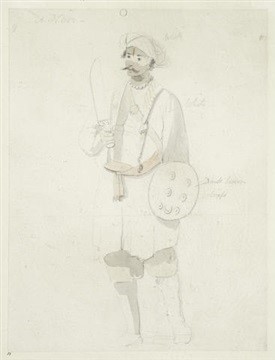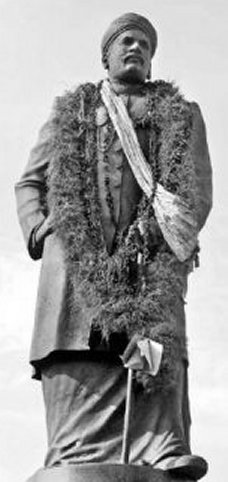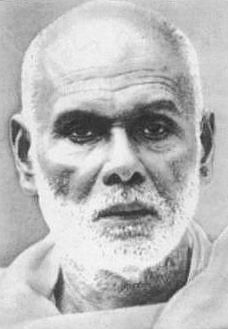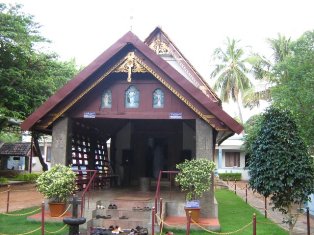The Channar Lahala or Channar revolt, also called Maru Marakkal Samaram, [1] refers to the fight from 1813 to 1859 of Nadar climber women in Travancore kingdom of India for the right to wear upper-body clothes covering their breasts.
The Channar Lahala or Channar revolt, also called Maru Marakkal Samaram, [1] refers to the fight from 1813 to 1859 of Nadar climber women in Travancore kingdom of India for the right to wear upper-body clothes covering their breasts.
In 19th century Travancore, baring of one's chest to higher status people was considered a sign of respect by both males and females. [2] [3] Thus, those of the lower status castes, such as the Nadar climbers.Even women of other dominant castes like the Nairs had to keep their breasts bare in the presence of Brahmin men. [4] [5] [6] [7] [8] The Nayar women in Travancore were allowed to dress as they pleased by a Royal Proclamation in 1865. [8] Brahmin women bare their breasts only in front of the deity in the temple. Before the arrival of Christian missionaries, it was common for women to go topless in Kerala in the 18th century. [9] [10] [1]
Higher-class women covered both breasts and shoulders with a piece of material known as the upper-cloth unless in the presence of people of still higher-ranked communities, [1] whereas Nadar climber women were not allowed to cover their bosoms, as most of the women in Kerala, to punctuate their low status. [11] Uneasy with their social status, a large number of Nadar climbers embraced Christianity, [12] and started to wear "long cloths," strengthened by their new belief system, which offered equal rights to all men (and women). When many more Nadars turned to Christianity, many Nadar women started to wear the brahmin breast cloth. [2]
The Nadar women successfully campaigned to be allowed to cover their breasts. In 1813, Colonel John Munro, British dewan in the Travancore court, issued an order granting permission to women converted to Christianity to wear upper cloth. The order was withdrawn when pindakars, members of the Raja's council, complained about this, arguing that this right would obliterate caste-differences, and lead to widespread 'pollution' in the state.[ clarification needed ] Nadar women were forbidden to wear the Nair sharf, and instead were allowed to wear the kuppayam, a type of jacket worn by Syrian Christians, Shonagas, and Mappilas. [2] [1] The women were not satisfied, continuing to fight for the right to wear upper cloth "like any other woman in the higher castes," [1] and preferring breast-clothing in the Nair-style. This led to increasing violence in the 1820s against Nadar women, and also the burning of schools and churches. In 1828 the Travancore government again forbade Nadar-women the Nair-style breast-clothes, but permitted the wearing of the jacket. [13] In 1829, the Travancore queen, Gowri Parvati Bayi, issued yet another proclamation, which denied the right of Nadar women to wear upper cloths. [1]
In 1858, new violence broke out in several places in Travancore. [14] On 26 July 1859, under pressure from Charles Trevelyan, the Madras Governor, the king of Travancore issued a proclamation proclaiming the right for all Nadar women to cover their breasts, either by wearing jackets, like the Christian Nadars, or tie coarse-cloth around their upper-body, like the Mukkavattigal (fisher-women). [13] [15] [16] Yet they were still not allowed to cover their breasts in the style of the higher-class Nair women. [17] This solution was not satisfactory to the missionaries, who regarded all men and women to be equal. Nadar women continued to ignore the restrictions, developing an upper-wear style that resembled the style of the higher class Hindu women, but offended some Hindus as a provocation by the missionaries. [18] The code was still discriminatory until 1915–1916, and the challenge was supported by Ayyankali.[ citation needed ]
After the revolt, pamphlets appeared putting forth the claims of Kshatriya status of the Nadars. Members of the caste claimed the right to wear the sacred thread and to ride palanquins to wedding ceremonies. By 1891 at least 24,000 Nadars had given their caste to the census enumerator as being kshatriya. [19]
The CBSE in December 2016 issued a circular to all 19,000 affiliated schools under it asking that a section 'Caste Conflict and Dress Change' – a chapter that included the Channar revolt – be omitted from the curriculum with effect from 2017. [20]
Nadar is a Tamil caste of India. Nadars are predominant in the districts of Kanyakumari, Thoothukudi, Tirunelveli and Virudhunagar.

The Nair also known as Nayar, are a group of Indian Hindu castes, described by anthropologist Kathleen Gough as "not a unitary group but a named category of castes". The Nair include several castes and many subdivisions, not all of whom historically bore the name 'Nair'. These people lived, and continue to live, in the area which is now the Indian state of Kerala. Their internal caste behaviours and systems are markedly different between the people in the northern and southern sections of the area, although there is not very much reliable information on those inhabiting the north.

Mahatma Ayyankali was an Indian politician, prominent social reformer, educator, economist, lawmaker, and revolutionary leader. He worked for the advancement of the oppressed people in the princely state of Travancore. His struggle resulted in many changes that improved the socio-political structure of Kerala. His determined and relentless efforts changed the lives of Dalits.
The caste system in Kerala differed from that found in the rest of India. While the Indian caste system generally divided the four-fold Varna division of the society into Brahmins, Kshatriyas, Vaishyas and Shudras, in Kerala, there existed only two varnas: Brahmins and Shudras, out of these four, while others were classified as Avarna. The Malayali Brahmins formed the priestly class. Brahmins labeled all other castes as "Sat-sudra", "Shudra" and "Avarna" based on their origin and ritual rank. The exception to this were Kings in Kerala like of Travancore and Cochin, who were ritually promoted to the status of Kshatriya by means of the Hiranyagarbha ceremony.

The Nambudiri, also transliterated as Nampoothiri, Nambūdiri, Namboodiri, Namboothiri and Nampūtiri, are a Malayali Brahmin caste, native to what is now the state of Kerala, India, where they constituted part of the traditional feudal elite. Headed by the Azhvanchery Thamprakkal Samrāṭ, the Nambudiris were the highest ranking caste in Kerala. They owned a large portion of the land in the region of Malabar, and together with the Nair monarchs, the Nambudiris formed the landed aristocracy known as the Jenmimar, until the Kerala Land Reforms starting in 1957. Naturalized Tulu Brahmins who took up Nambudiri customary ways are known as Embranthiri Brahmins.
The caste system among South Asian Christians often reflects stratification by sect, location, and the caste of their predecessors. There exists evidence to show that Christian individuals have mobility within their respective castes. But, in some cases, social inertia caused by their old traditions and biases against other castes remain, causing caste system to persist among South Asian Christians, to some extent. Christian priests, nuns, Dalits and similar groups are found in India, Pakistan, Bangladesh, and Nepal.

The Ezhavas are a community with origins in the region of India presently known as Kerala, where in the 2010s they constituted about 23% of the population and were reported to be the largest Hindu community. The Malabar Ezhava group have claimed a higher ranking in the Hindu caste system than do the others, although from the perspective of the colonial and subsequent administrations they were treated as being of similar rank.

Arattupuzha Velayudha Panicker, also known as Kallisseril Velayudha Perumal, was a 19th-century social reformer and warrior, known for his fight against many social evils prevalent in the state of Kerala. He was born into an affluent Ezhava family known as Kallisseril, in the small independent province called Mangalam, near Haripad in Alappuzha district.
There are numerous ceremonies and customs adopted by the Nair caste, which is prominent in the South Indian state of Kerala.

Kiryathil Nair or Kiriyath Nair is a Kshatriya subdivison of Nair caste, of martial nobility, having performed the functions of Kshatriyas in Kerala, India. They also did business, industry, medicine and accounting. But as they were Kshatriya sub-division their main occupation was martial nobility.

Vaikom Satyagraha, from 30 March 1924 to 23 November 1925, was a nonviolent agitation for access to the prohibited public environs of the Vaikom Temple in the Kingdom of Travancore. Kingdom of Travancore was known for its rigid and oppressive caste system. The campaign was led by Congress leaders T. K. Madhavan, K. Kelappan, K. P. Kesava Menon. Other notable leaders who participated in the campaign include George Joseph, E. V. Ramasamy "Periyar" and it was noted for the active support and participation offered by different communities and a variety of activists.
The Sivakasi riots of 1899 were a series of communal disturbances which occurred during 6 June 1899 in Sivakasi, present-day Virudhunagar district, Tamil Nadu, India.
Nadans are a small endogamous group of aristocratic Nadars from the regions south of the Thamirabarani River in the present-day state of Tamil Nadu, India. They were hereditary tax collectors during the Nayak and Pandyan rule and also served as petty lords under the poligars. The Nadans possessed vast tracts of land and were one of the few subcastes among the Nadars to have practiced aristocracy. The term Nadan means lords of the land.
Nadar climbers, or Pannayeri Nadars, are a sub-caste of today's Nadar community. They were regarded as the largest Nadar sub-caste. Their traditional occupation was climbing trees and gathering the sap of coconuts to make palm wine. Due to new economic opportunities, the majority of Nadar climbers have given up their traditional occupation.
The story of Nangeli depicts a Ezhava woman to have lived in the early 19th century in Cherthala in the erstwhile princely state of Travancore in India, and supposedly cut off her breasts in an effort to protest against a tax on breast.
Mulakkaram, literally translated as breast tax, was a poll tax imposed on women belonging to Nadar, Ezhava and other lower caste communities by the erstwhile Kingdom of Tranvancore, and was not applicable to upper caste women of Travancore. The term "breast tax" was used to denote the gender of the person and not breasts per se.
Kallumala Samaram (leader-Ayyankali)is an agitation or social revolution by Pulayar community that took place at Perinad and nearby villages such as Cherumoodu, Kanjavely etc. in, Kollam district on 24 October 1915.

Christianity in Kanyakumari district is its second largest religion. The Catholic Church has about 500,000 followers, while the Protestant groups have about 400,000 members.

Nudity in India has a multifaceted history, deeply rooted in the nation's religious, cultural, and social practices. While public nudity is generally frowned upon in modern urban areas, specific religious and traditional contexts have embraced forms of nudity as symbols of purity, renunciation, or spirituality. It is worth noting that the depiction of nudity in Indian art doesn't support the claim that public nudity was acceptable/normal across all castes and regions in India. By contemporary standards, the unclothed female upper body is considered semi-nude or a sign of obscene nudity, however, historically some regions and classes/castes of modern-day India, have traditionally had this kind of public nudity/semi-nudity as the norm.